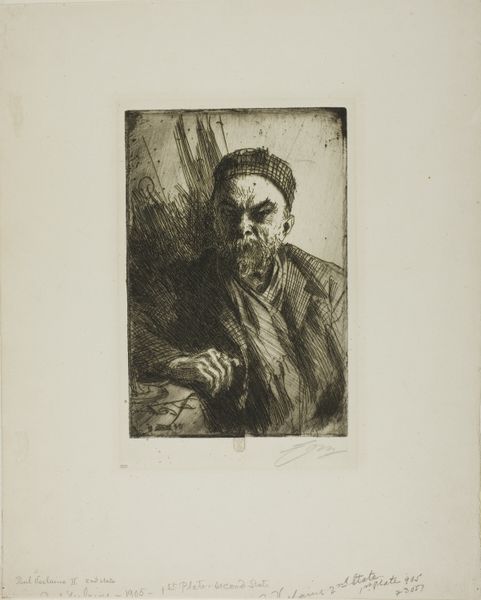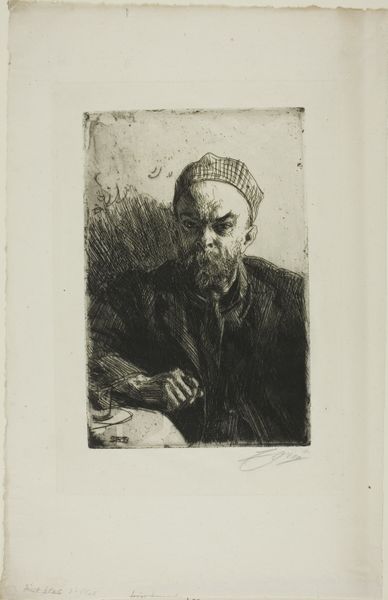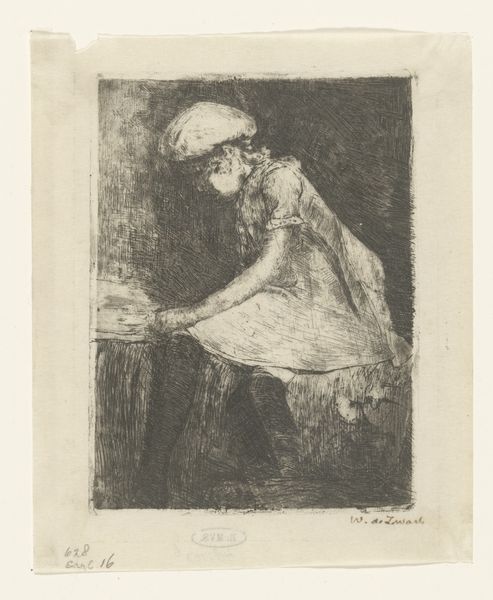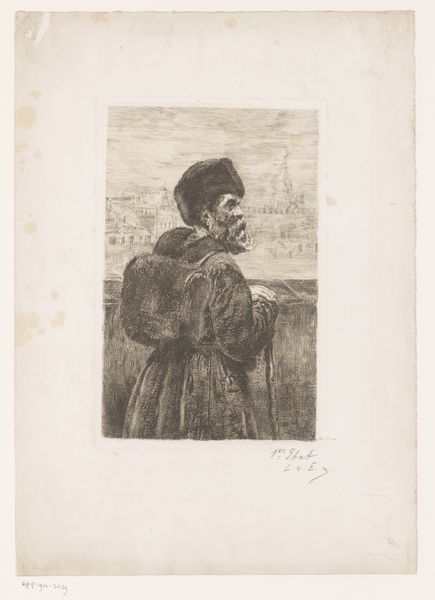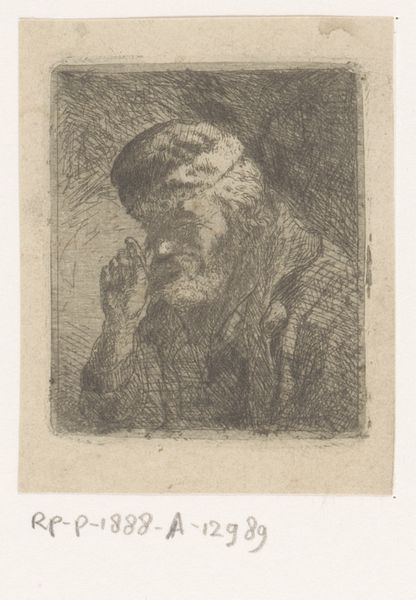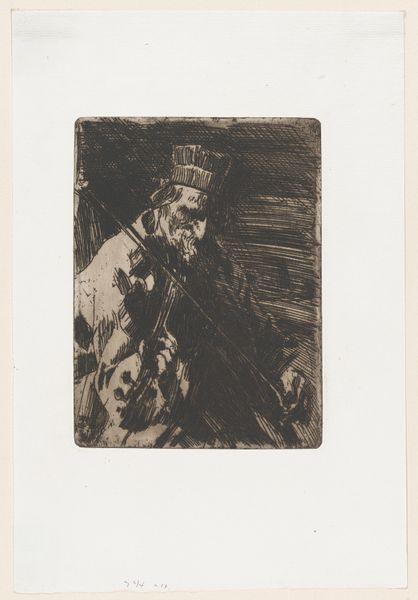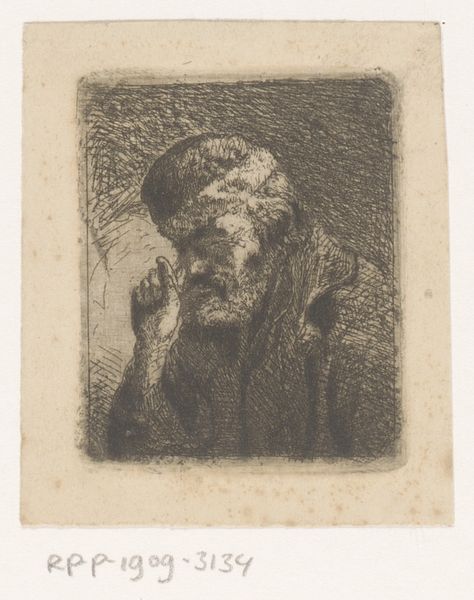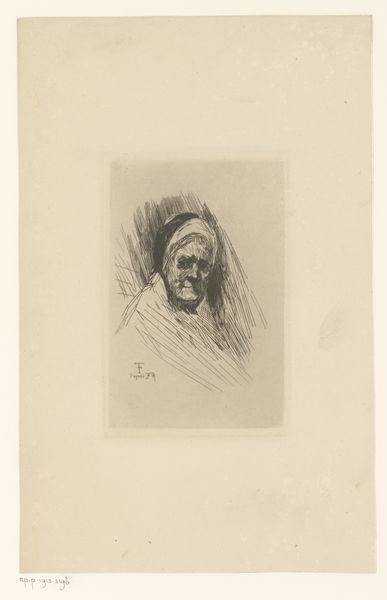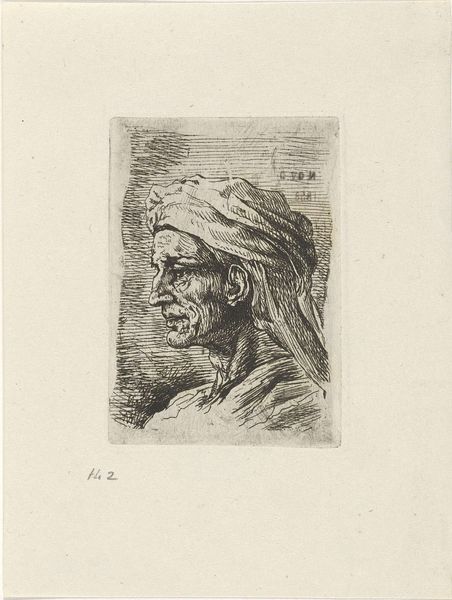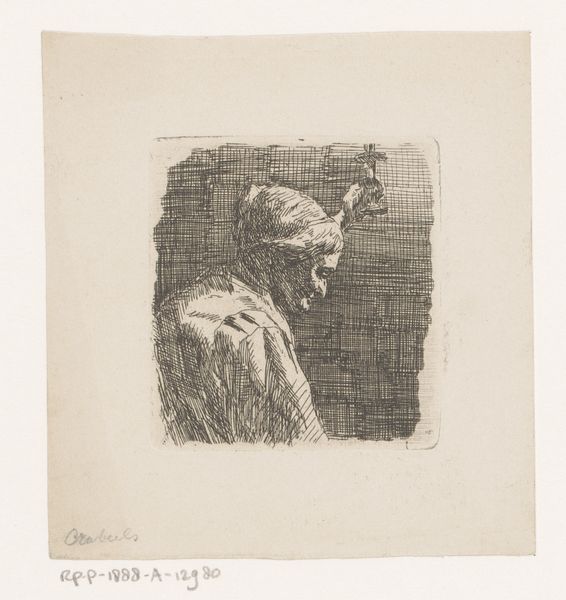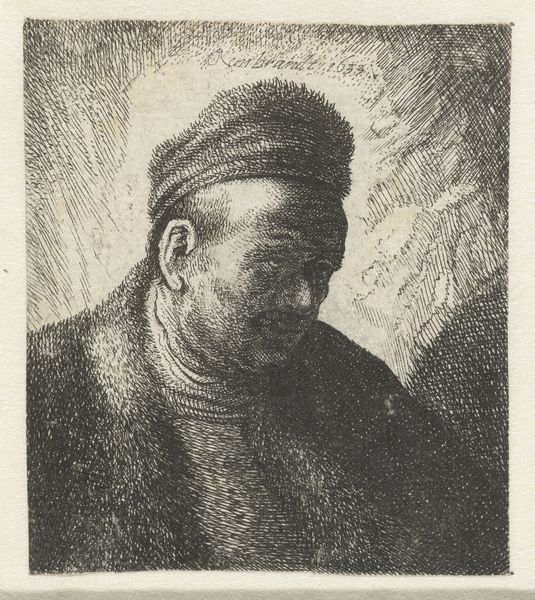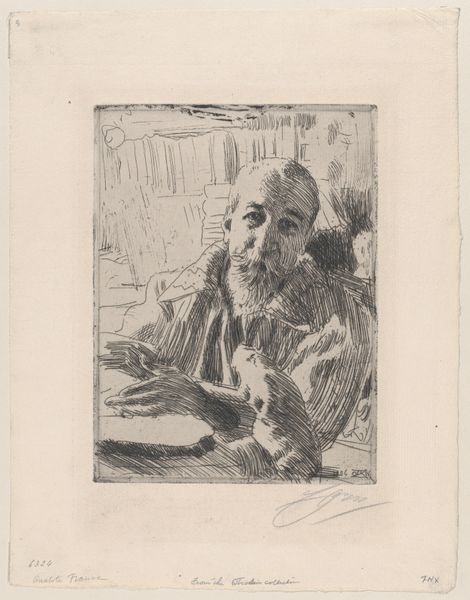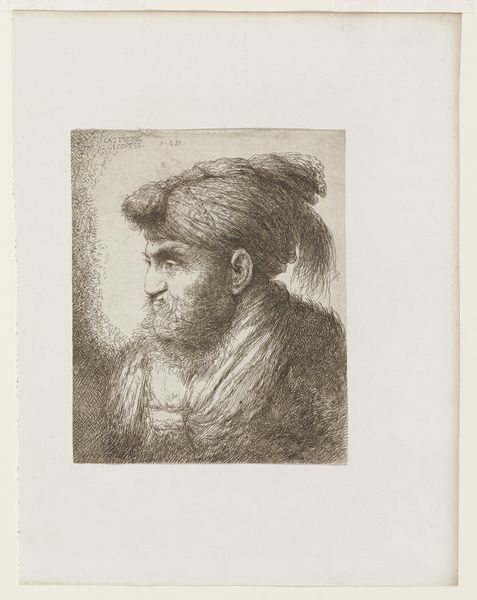
Dimensions: 240 × 160 mm (image/plate); 402 × 313 mm (sheet)
Copyright: Public Domain
Curator: What strikes me immediately is the sheer intensity of this portrait. The eyes are piercing, almost unsettling. It’s like Verlaine is staring right through you. Editor: And yet, it's rendered so delicately. This is Anders Zorn's etching, "Paul Verlaine II," made in 1895. It is a small, intimate artwork. Zorn was, of course, a master of capturing light and texture. But how do you think his impressionistic style reflects on Verlaine? Curator: Absolutely. You can almost feel the scratch of the etching tool across the plate. And that intensity I felt? Perhaps it's Zorn capturing Verlaine at a moment of truth. I see his work usually dealing with self-portraits. Is there any social reflection here, through Verlaine's face? Editor: Well, Verlaine was a notorious figure. A Symbolist poet, known for his scandalous personal life as much as his art. Zorn likely portrays that reputation within the Parisian scene. The gaze may mirror society’s scrutiny towards controversial figures during the 19th century. Think about Oscar Wilde's trials. It reflects a kind of public fascination, even condemnation, of artistic outsiders. Curator: It’s a charged exchange between artist and sitter. This small print holds so much emotional weight! The sketchy lines surrounding Verlaine’s form could even signify the chaos surrounding him! Editor: Zorn met Verlaine during his later years. His legacy of works show us more about his struggles through alcoholism. So I wonder, does that notoriety feed into our reading of the image? Is it inescapable, or should we strive to see beyond it, focusing instead on Zorn's artistic choices? Curator: Difficult to say, isn’t it? Can we ever truly separate the art from the artist? I appreciate that the piece demands attention. To think that something so small could contain such depths of humanity, is amazing. Editor: Ultimately, it invites us to engage with a moment frozen in time. Verlaine’s eyes continue to hold the complexities of a brilliant, troubled mind. And Zorn gives us just a tiny peek at that story.
Comments
No comments
Be the first to comment and join the conversation on the ultimate creative platform.
